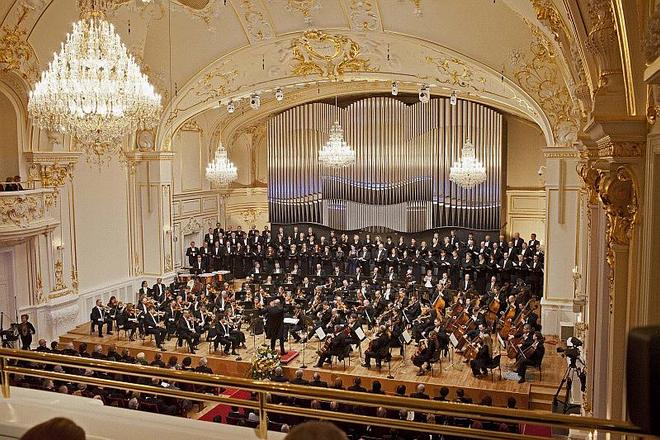WHEN the Reduta, residence of the Slovak Philharmonic and one of Bratislava’s most well-known buildings, had to be closed at short notice due to its poor structural condition in April 2009, the musical ensemble promptly moved across the square. They performed there, in the Old Building of the Slovak National Theatre, otherwise known as the Opera House, for almost three years while the Reduta was reconstructed. But the work was recently completed and on January 26 and 27 the building reopened to the public with a performance of Beethoven’s Ninth Symphony.
The structural renovation work finished on schedule and spending to date has been less than originally forecast: €30 million instead of the €37 million budgeted. However, as the two opening concerts were being rehearsed, the Reduta’s interior was still not fully furnished – following the scrapping of a tender by the Office for Public Procurement – and completion of the final work will increase the bill somewhat. The new organ in the concert hall, made by Austrian company Rieger Orgelbau, will need 14 weeks of tuning and adapting, and the first organ concert is scheduled for May 20.
The building dates back to the beginning of the 20th century and was designed to resemble a similar building with the same name – Reduta – in Vienna. Over the decades it suffered from the depredations of the weather, vibrations caused by trams passing close by, and partial or shoddy rebuilding. The reconstruction just completed, which was necessitated by the lamentable state into which the building had lapsed by 2009, was its biggest to date. According to the construction and restoration companies involved, the work has brought the building closer to its original design than even the original builders did, hampered as they were by financial limits imposed by the onset of World War I.
Norway and EEA Grants (the latter, the European Economic Area, includes Iceland and Liechtenstein as well as Norway) contributed almost €2 million to the cost, Norway’s Ambassador to Slovakia, Trine Skymoen, told a press conference. The head of the Slovak Philharmonic, Marián Lapšanský, said that the new building would also become a cultural centre, with more space for works of art and an atrium that will show its potential once the cold weather abates.
When asked by The Slovak Spectator, the Slovak Philharmonic’s concert-master, principal and first violinist Jarolím E. Ružička said that the musicians were generally satisfied with the reconstruction too, regarding it as an improvement when compared to the period before the Reduta was closed, especially when it came to dressing rooms, technical conditions in general and things like elevators. He added that one of the biggest musical bodies in Europe had long deserved a better space. Ružička concluded that among the musicians there was satisfaction with 97 percent of the results from the reconstruction and that they hoped for the remaining three percent to be improved and eliminated in the course of the “adaptation process”. He praised the new recording equipment, which will rank among the most modern in Europe and which can be used not only by the philharmonic but also rented to outside clients.
Visitors are now able to admire in particular the visual changes to the building, which has been transformed from a dusty if glorious monument that carried a heavy patina of age into an open space full of air, light and interesting decorative details. Apart from some special events, all the Slovak Philharmonic’s concerts will take place in the Reduta from now on. The opening concerts took place in the Big Hall, and Beethoven’s Ninth Symphony – conducted by principal conductor Emmanuel Villaume and performed by the orchestra and choir of the Slovak Philharmonic led by main choirmaster Blanka Juhaňáková and soloists Simona Houda-Šaturová (soprano), Terézia Kružliaková (alto), Ľudovít Ludha (tenor) and Peter Mikuláš (bass) won a standing ovation.
The work performed was perhaps chosen for its EU – or even EEA – connotations, as it has been adopted as a European Anthem. Or it may have represented another disguised symbol: the words were taken from Friedrich Schiller’s Ode to Joy, perhaps reflecting a simple sigh of relief after the philharmonic’s long stay in borrowed premises and the tension connected with the extensive reconstruction work.

 The grand reopening concert on January 26 (source: Courtesy of SF)
The grand reopening concert on January 26 (source: Courtesy of SF)